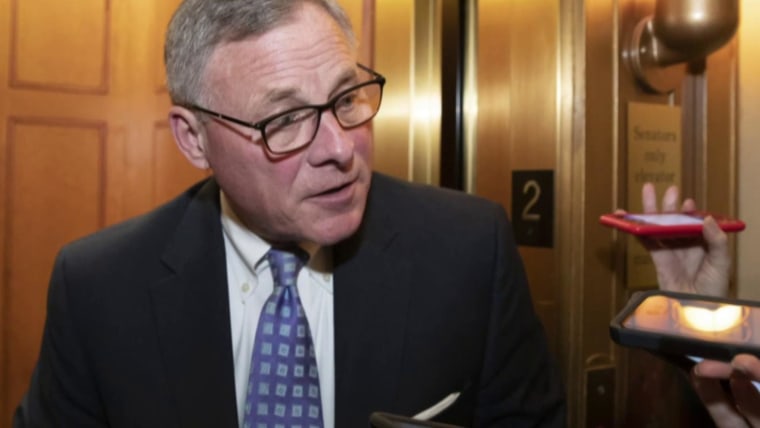When will financial markets hit bottom? The past may not hold any clues.
The coronavirus has ripped United States financial markets from their moorings. Even veteran investors say they’ve never seen the turbulence across all markets that we have experienced in recent days, making it extremely difficult to use the past to predict what will happen next or tell people how to protect their retirement income. In one important way, U.S. companies were actually in better shape on the cusp of the Great Depression than many are now.
U.S. stocks have lost 35 percent from their peak in mid-February. Corporate bond prices are down at least 17 percent, even those issued by higher-quality companies. Prices of municipal bonds, a refuge for risk-averse investors, have also collapsed — a Vanguard fund holding these obligations is down 15 percent. Even U.S. Treasury bonds, the ultimate safe haven, are off their peaks.
Another shocker is the price of gold. Normally, gold and gold mining stocks rise in periods of fear and uncertainty because investors view the precious metal as a reliable store of value. Not this time. An index of gold mining stocks is down 34 percent from its March peak.
For now, these dislocations are the result of a rush by investors, many of them carrying heavy debt, to sell everything that carries risk. That always happens in a market decline, when the fear of losses supplants investors’ fears of missing out on gains.
But some aspects of the current upheaval in financial markets are unique in recent history, investors and analysts say, making it extremely difficult to use the past to predict what will happen next.
“Fear of death is what is driving people’s panic and the markets’ reaction makes it even harder for them,” said David Kotok, co-founder and chief investment officer at Cumberland Advisors. “The sentiment shift is as extreme as we have ever seen.”
Other elements are compounding those extraordinary fears. For example, risky debt issued by U.S. companies stands at record levels, raising the potential for defaults, bankruptcies and layoffs in an economic downturn. And some market participants who typically buy shares when they’ve been hard-hit may not do so this time. Public pensions, for example, are severely underfunded and less able to invest in stocks than they have been in other periods of tumult.
The coronavirus is in a class by itself as a force of economic and market chaos, some analysts say.
“What’s happening is very simple and very scary.”
“What’s happening is very simple and very scary — we are transitioning from one era to another,” said James Bianco, president of Bianco Research, an investment research firm in Chicago. “We’re going to see a complete change in the way we live our lives and do business and every market is in the process of saying that’s going to happen. We are priced in the wrong era, we need to be priced for the new era.”
Among the possibilities cited by Bianco: more manufacturing in the U.S. rather than overseas, less travel, more work done at home, fewer big-ticket discretionary purchases. “The earnings prospects for the entire economy are not going to be as great as they were pre-crisis,” he said.
Let our news meet your inbox. The news and stories that matters, delivered weekday mornings.
Investment pros say the world is grappling with a crisis that is literally about life and death, not simply about absorbing financial hits.
In the 2008 debacle, the most recent financial crisis we can use as a comparison, investors and homeowners faced enormous economic losses. The prospect of forfeiting one’s home to foreclosure or filing for personal bankruptcy was devastating for the Americans who went through it, but that process wasn’t comparable to confronting a potential loss of life among family, friends and colleagues owing to the coronavirus.
Another difference in the markets this time: Corporate debt is at extremely high levels going into a steep economic downturn. As earnings collapse across many industries, these borrowings become more difficult to service or repay.
This situation contrasts to the strong financial positions held by large blue-chip companies in the years leading up to the Great Depression, said William Lazonick, president of The Academic Industry Research Network and former professor of economics at University of Massachusetts.
“Large corporations were awash with profits going into 1929, even as the real economy was slowing,” Lazonick said. “They were selling shares at high prices, paying off debts and putting cash into their corporate treasuries. So major companies were in better shape than they are now when the Crash came.”
Realizing the perils that indebtedness creates, investors have been selling corporate debt, especially lower-quality bonds and leveraged loans, obligations issued by companies with a poor credit history or considerable existing debt. This selling is harder to see than what’s happening in the stock market, which is more transparent.
Corporate bonds of lower-quality, known as junk bonds, have lost 21 percent of their value broadly, and according to Debtwire, a provider of credit market data, 70 percent of leveraged loans recently traded below 90 cents on the dollar, up from just 11 percent of the market that traded at that level on Feb. 21. Most bonds are issued at 100 cents on the dollar and don’t move around as much as stocks do. Declines of ten points or more are unusual.
Investors are not the only ones hurt by corporate loan defaults–workers are as well. As businesses and factories close and earnings crater in the coming months, unemployment is expected to skyrocket, economists say. Outplacement firm Challenger, Gray & Christmas estimates that 14 million jobs in the hospitality industry are threatened by government-mandated closures. Layoffs at financially impaired businesses will add to those.
Heavily indebted investors, such as hedge fund managers, are also adding to the pressure on stock and bond prices. When their holdings take a fall, these investors face a tough decision: They can add money to shore up their stakes, or they can sell them. Most choose the latter.
In recent years when the markets were rising, hedge funds increased their borrowings. The average fund carried gross leverage of 7.7 times in Dec. 2018, according to the most recent Federal Reserve data, up from 5.4 times in 2013. That means for every dollar of outright losses incurred, a fund is on the hook for $7.70.
Nervousness in the markets is also rising as companies hurry to tap their credit lines with lenders to provide a cushion for a downturn. On Thursday, Ford Motor Company said it was drawing all $15.4 billion in its unused credit lines to preserve its “financial flexibility.”
Even companies that are thriving are tapping credit lines. Supermarket chains, for example, have been racking up enormous sales gains as Americans stock up on essentials in anticipation of coronavirus lockdowns.
Still, on March 12, Idaho-based Albertsons Companies Inc., withdrew $2 billion under a $4 billion borrowing arrangement struck with lenders in Nov. 2018, SEC filings show. Albertsons said it had seen “a significant increase in sales as a result of consumer response to the COVID-19 outbreak and has not experienced any disruption in its operating activities.” The company took the $2 billion, however, as a precaution “to increase its cash position and preserve financial flexibility in light of current uncertainty in the global markets,” it said.
As more companies tap their credit lines, pressure rises on the banks that extended them to clients when times were good.
Indebted companies may also turn to corporate asset sales to raise cash, even at depressed prices, analysts say. “Many companies may soon become cash-strapped and, as part of their search for additional sources of liquidity, consider possible asset sales,” wrote John A. Sirico, an analyst at Covenant Review, a credit research firm in New York, in a client note. Distressed asset sales can feed a downward spiral.
To be sure, buyers will begin picking through the stock and bond market wreckage for bargains at some point. But two sizable buying sources may not materialize.
One major support for stock prices, especially in recent years, has been corporate share repurchases. In 2018, for example, companies in the S&P 500 Index bought back $806 billion of their shares, roughly $200 billion more than the previous record set in 2007, according to an article in the Harvard Business Review.
Many of these purchases were fueled by debt. But few companies now have either the cash or debt capacity to buy back shares, even though they’d be doing so at cheaper prices than their earlier repurchases.
“Stock market traders got used to the notion that if a stock price goes down, the company is going to support it,” Lazonick said. “That’s feeding into the stock market crash now, because that’s not going to be the case.”
Public pension funds have been another source of buying power during bear markets in stocks. According to researchers at Goldman Sachs, pension funds bought stocks in 12 out of13 bear markets since 1950.
That support may not be forthcoming today. Pension funds are massively underfunded — Federal Reserve Board data from 2017 showed state and local pensions had assets totaling only 52 percent of their liabilities, on average. And rising state and local deficits caused by the coronavirus are likely to crimp pension contributions this year, experts say.









